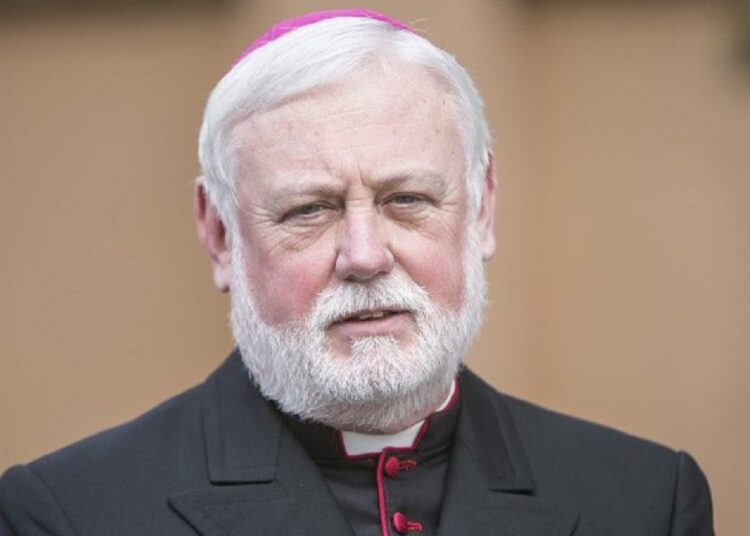The Vatican Secretary for Relations with States and International Organizations, Monsignor Paul Richard Gallagher, began an official visit to Cuba on Tuesday, where he will meet with President Miguel Díaz-Canel and Foreign Minister Bruno Rodríguez, in the framework of the 90th anniversary of diplomatic relations between the Holy See and Havana.
Gallagher’s agenda includes meetings with government and ecclesiastical authorities, as well as participation in a Mass in Havana Cathedral to commemorate the beginning of the pontificate of Pope Leo XIV.
The visit, the first by a high Vatican representative since the election of the new pontiff, seeks to reaffirm the historical ties between the two States, which have maintained uninterrupted relations since 1935, even after the establishment of the Cuban socialist system.
Paul Richard Gallagher is a British Catholic archbishop born in Liverpool on January 23, 1954. Since November 2014, he has been Secretary for Relations with States within the Secretariat of State of the Holy See.
Releases
The trip comes months after the Cuban government announced the release of 553 prisoners, a measure adopted after the Vatican’s mediation, which concluded last March 10.
According to the Cuban Ministry of Foreign Affairs, the release was planned gradually and responded to a “humanitarian spirit” linked to the 2025 Jubilee.
The fact did not imply a total release, but an “early release” in which the beneficiaries must comply with certain legal obligations and may be reinstated in prison if they fail to comply with these conditions.
This explains the return to prison of opposition members José Daniel Ferrer and Félix Navarro. Specifically, it is argued that the former failed to appear before the judge on two occasions and that the latter left his municipality seven times without judicial permission, which was considered a violation of the rules of his release.
Among those released from prison were people convicted of various crimes, not only for political reasons. The complete list of beneficiaries has not been officially released.
The early release process also coincided with the late decision of then-President Joe Biden to remove Cuba from the list of countries sponsoring terrorism, a gesture that the incoming Republican president, Donald Trump, reversed early on.
Pope Francis publicly celebrated the releases, calling them “a gesture of great hope” and urging that similar initiatives be multiplied around the world.
The Holy See’s intervention in favor of prisoner releases in Cuba follows a tradition of ecclesiastical mediation on the island, which has facilitated releases at key moments, such as the papal visits of John Paul II in 1998 and Francis in 2015.
Mutual respect and ethical diplomacy
The Cuban Government has emphasized that its relations with the Holy See are founded on mutual respect and ethical diplomacy, highlighting the Vatican’s role as an interlocutor in humanitarian and reconciliation processes.
After the death of Pope Francis, the insular government profusely praised the figure of the pontiff and highlighted the ties established between him and Cuba as “one of the greatest rapprochements between the Catholic Church and the nation, based on a relationship of mutual respect and sensitivity,” recalled a dispatch from the Spanish news agency EFE.
Three popes have visited Cuba since 1959. The first was John Paul II, in 1998. Fourteen years later, on March 26-28, 2012, Benedict XVI became the second pontiff to travel to the island.
In September 2015, Pope Francis arrived amid a context marked by his mediation in the reestablishment of diplomatic relations between the United States and Cuba, a conflict with more than half a century of tensions and political and economic blockade, EFE reported.
EFE/Redaction OnCuba










